Release Notes – 01/17/2023
Feature Request Button
We now have a feature request button on the left hand side of your dashboard in the Hyros app. Your feedback is extremely important for us, so please submit any feature requests you would like to see on the platform here:
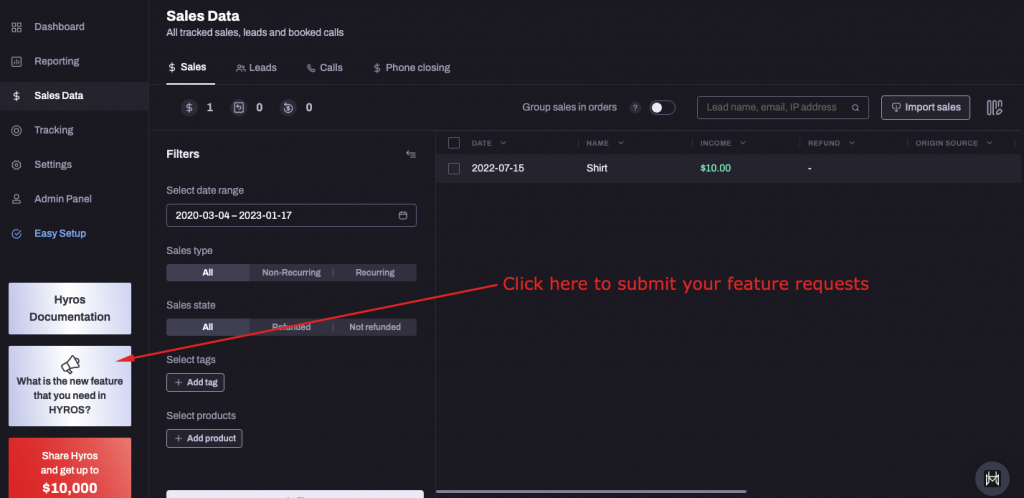
Direct Data Imports
We have now included a method of directly importing data into Hyros from a platform rather than importing a custom CSV, which should make the process of importing sales data much more streamlined.
You can import data inside the “sales data” tab by clicking the “import sales” button as shown here:
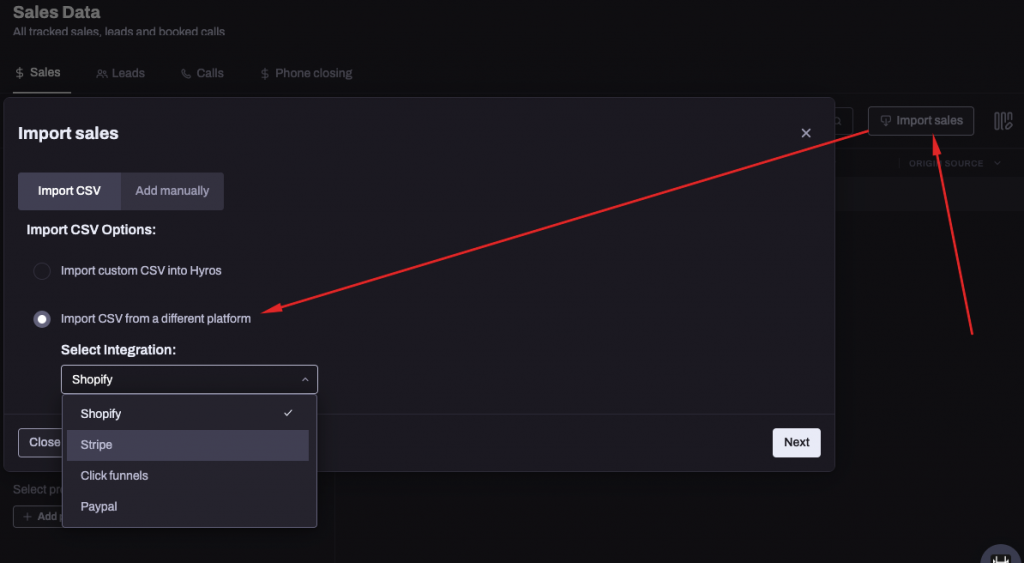
Please take in mind this is only available for a limited number of platforms in this initial iteration.
Lead Data Source Display
Inside the Sales data -> Leads tab, you will now be able to view the origin and last source of a lead even if it has an origin lead attached to it.
Previously we did not show sources for child leads but this should improve troubleshooting and confirming your tracking.
Recurring Sales Improvements
Inside your True Tracking settings, you will now have the option to disable “recurring products”:
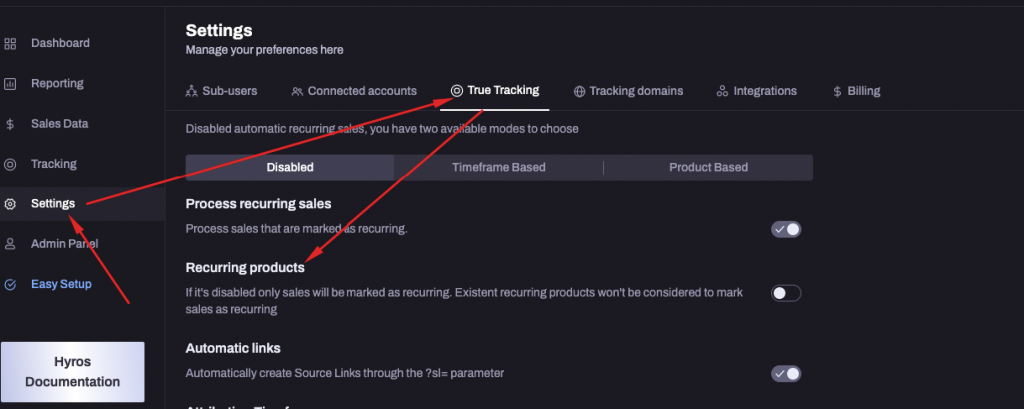
This will be enabled by default, but you may find this helpful to turn off if you are using a different method of tracking recurring sales to Hyros’ internal recurring sales tracking, such as Shopify order level tags.
For more details, please see this guide: https://docs.hyros.com/tracking-recurring-sales/
Manually Importing Ads from Snapchat and Pinterest
Just as with Facebook and Google, we have now added the option to manually import your ad data from Snapchat and Pinterest.
This is an optional step, but it is especially useful if you have any enagagement campaigns or any ads without a call to action link. Because there is no click for Hyros to track, you will now be able to manually import these ads in order to track any cost data associated with these types of ads.
For more information, please select the link below depending on the ad platform:
Smart Dynamic URL Rules
We have created a new “dynamic” URL rule type, which will now be able to read any UTM parameter and create a source based on the value of that parameter.
For example, if you wanted to track a source based on the standard UTM for Campaigns, you could create a URL rule based on “UTM_Campaign”.
Then we will create a source based on what comes after “=”, so if a lead lands on your page with the UTM “UTM_Campaign=EmailCampaign1” Then we will automatically create a source labelled “@EmailCampaign1”.
This will make tracking miscellaneous and email sources much easier to do using UTMs that you have already setup.
For more information, please see this guide: https://docs.hyros.com/setting-up-tracking-rules-to-catch-random-sources/
New “Exclude sale with product” filter
We have release the option to choose a specific product to exclude from the report. Any products selected here will be excluded in any metric calculations in the report. This filter will NOT exclude any leads, just products.
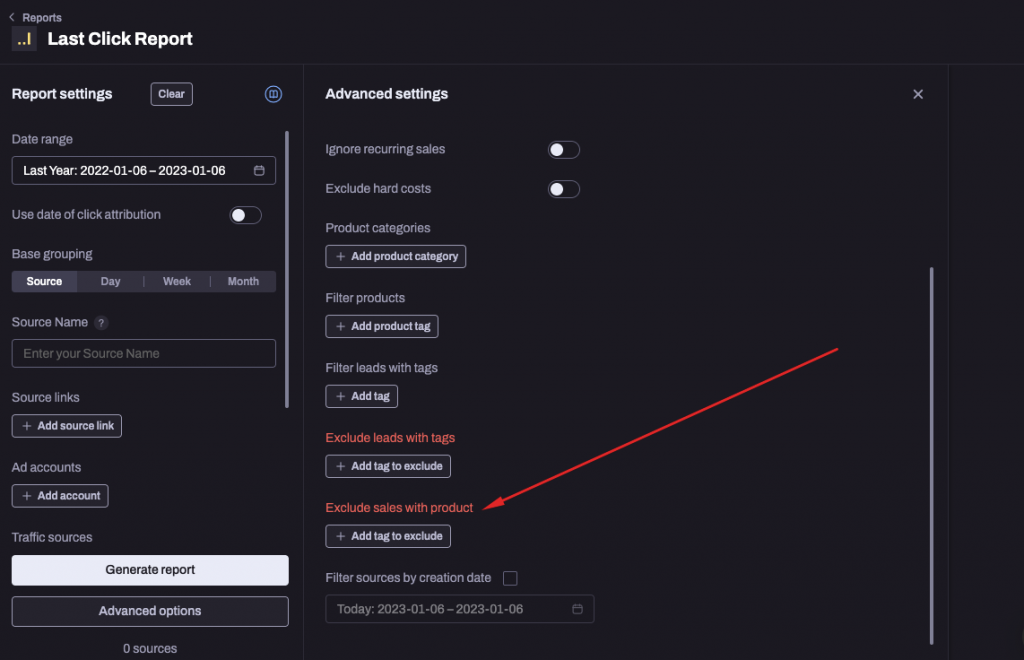
For more information on how these filters work, please see the following guide: https://docs.hyros.com/using-report-filters/
Track Sales as Leads/Opt in
A new option has been created to allow considering the sale as an opt in to be counted towards the “lead” metric:
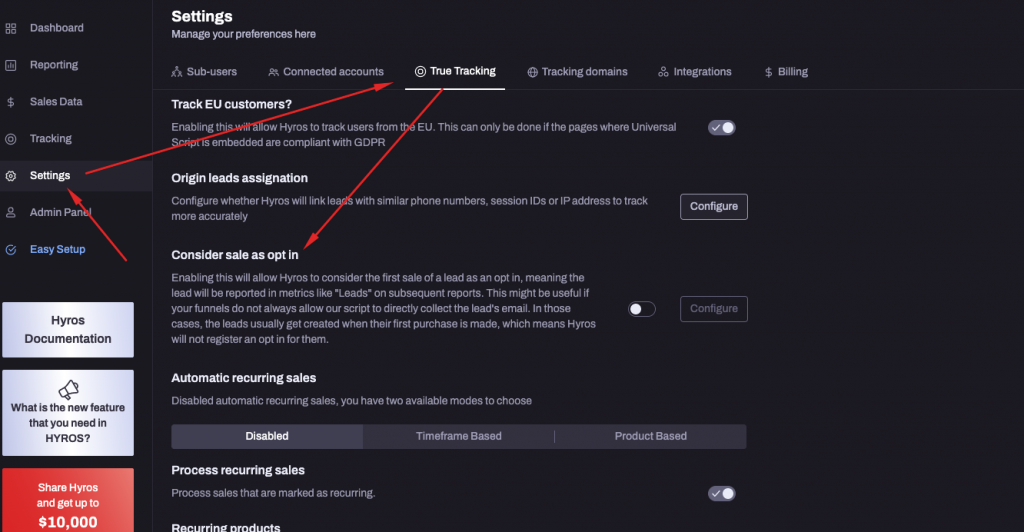
If a lead does not opt in for some reason and later makes a purchase. For some specific funnels we may not track the email prior to recieving the sale.
By default, Hyros will not track the email recieved from a sale as an opt in or “lead”, so in these rare cases you will have 1 “sale” and 0 “leads”.
If your flow contains such situations, we advise toggling this option on if you would like to inlcude the sale as a “lead”.
Deep Mode for Unique Customers and Refunds
We now allow the option to click on the unique customers and refunds metrics in your reports in order to easily investigate all orders/sales that are taken into account when calculating these metrics, just like we currently do with sales and leads.
This will allow you to verfiy your stats and troubleshoot your data more effectively.
